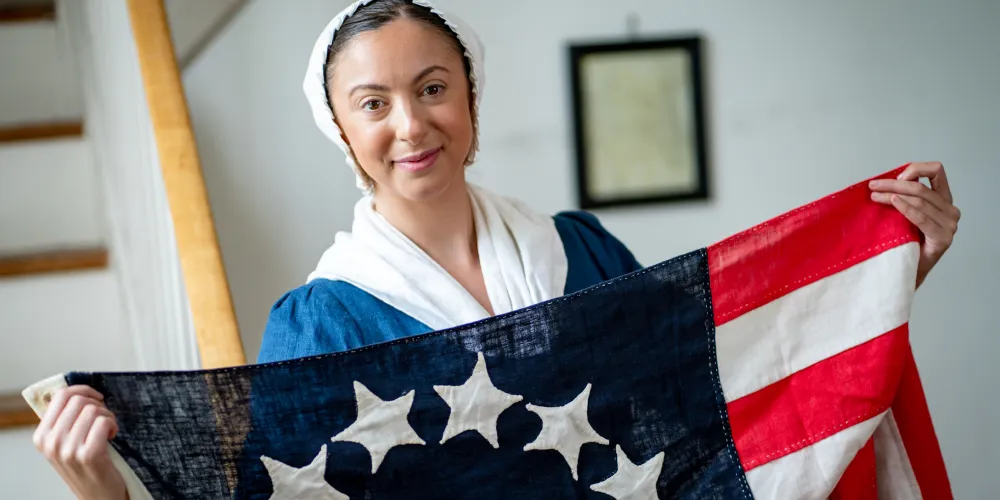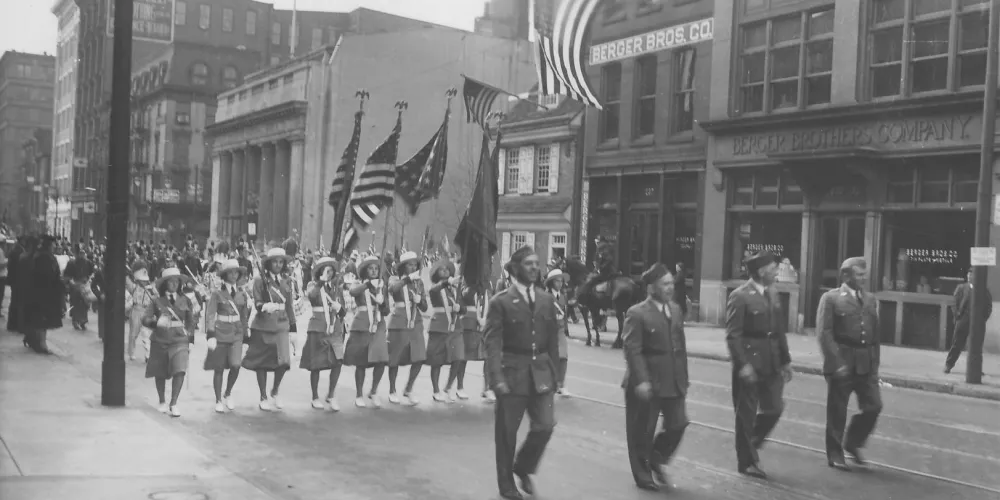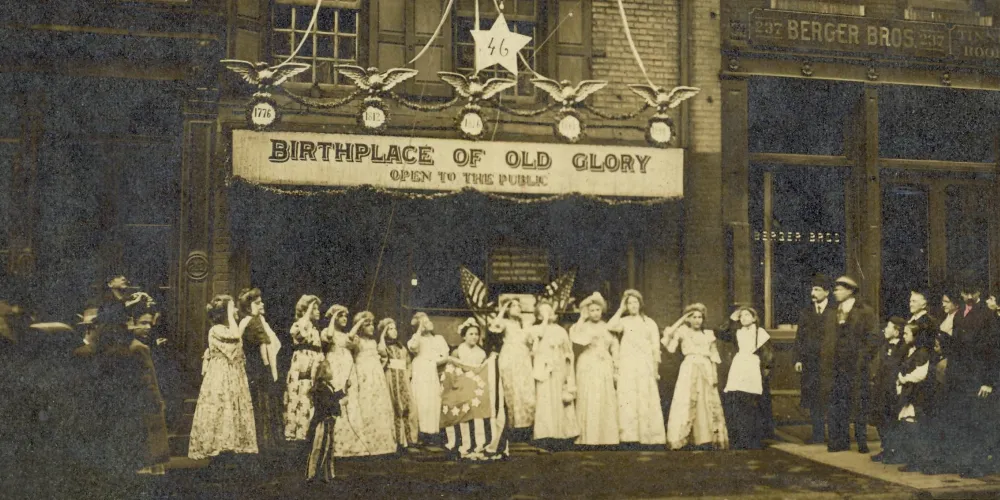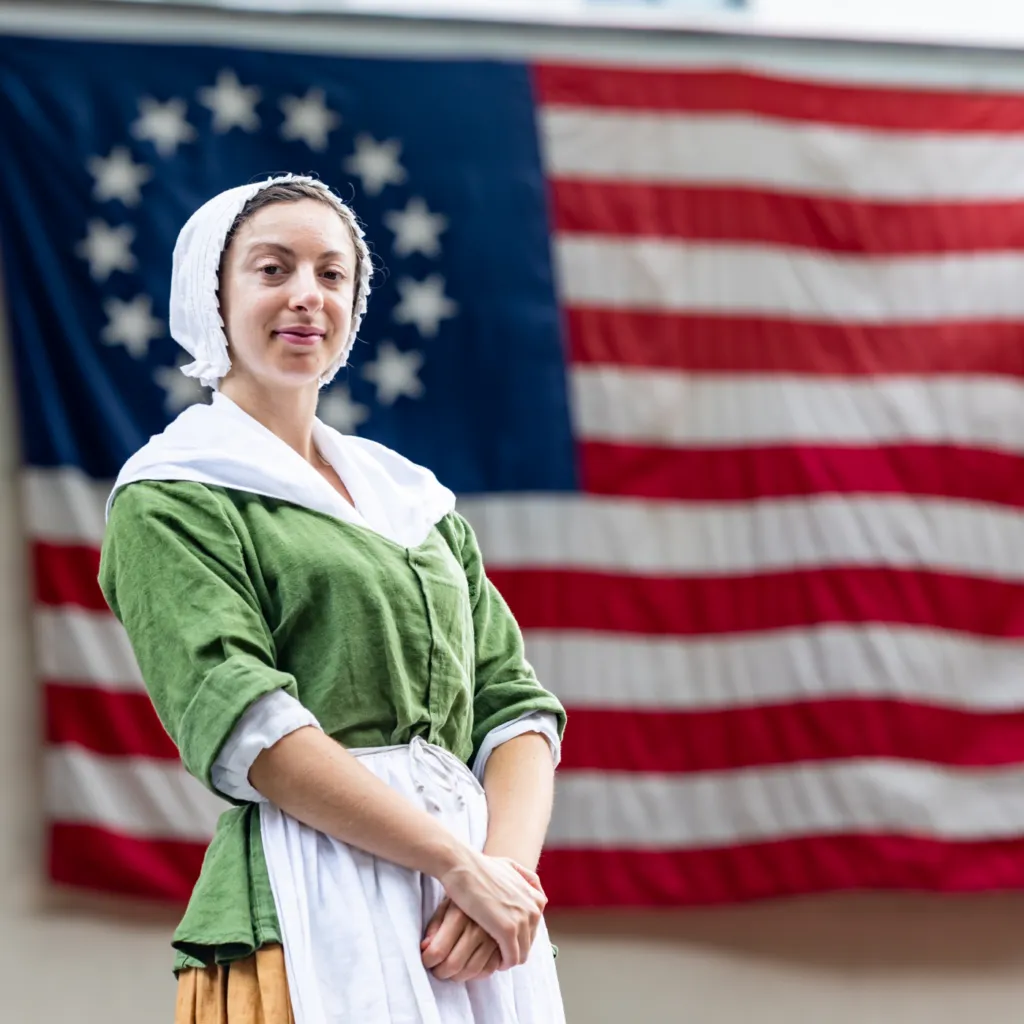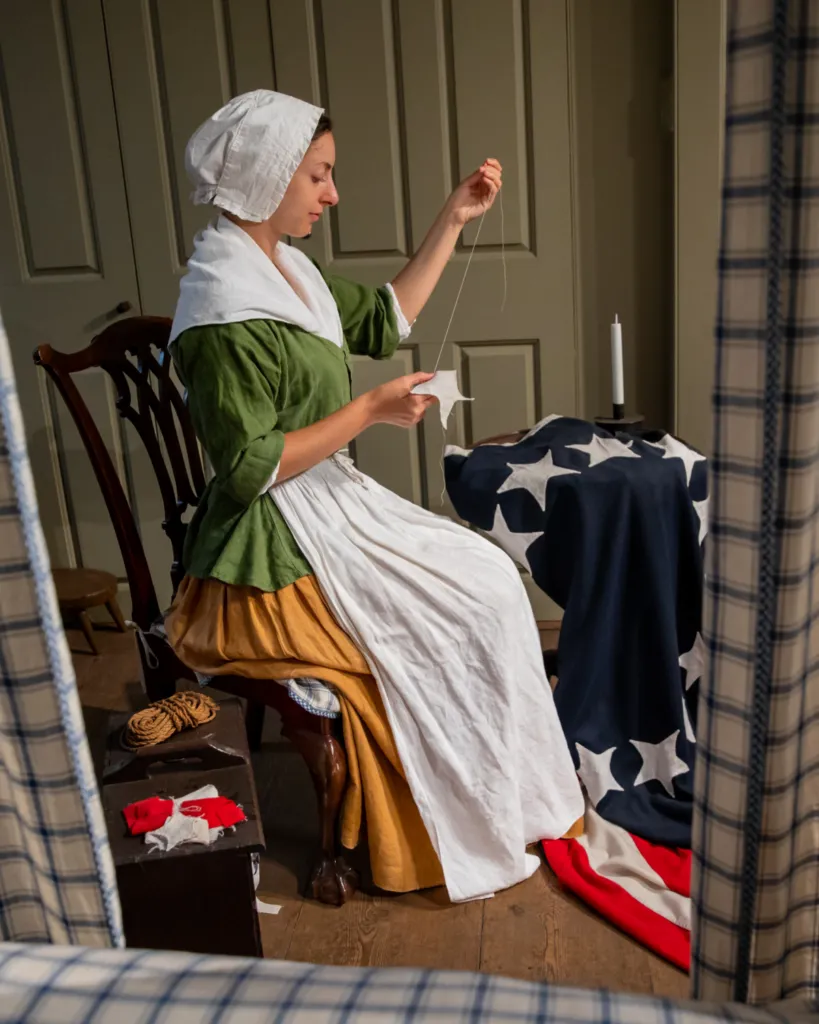
Work in the Betsy Ross House upholstery shop is buzzing with as much activity today as it did back when Betsy ran her business from there. Our trained historic interpreters are busily hand-stitching items using the same 18th century methods that Betsy and other upholsterers used doing their work back in the day.
But first, what is upholstery and what does an upholsterer do? Basically, an upholsterer sews fabrics and paddings that make soft coverings for furniture, especially chairs and sofas. But they also make draperies and bed hangings. And, other fun facts about 18th century upholsterers. They also sold wallpaper, covered parasols, made and stuffed mattresses, made tassels and trims, and assembled Venetian blinds. In other words, they were very busy doing many things.
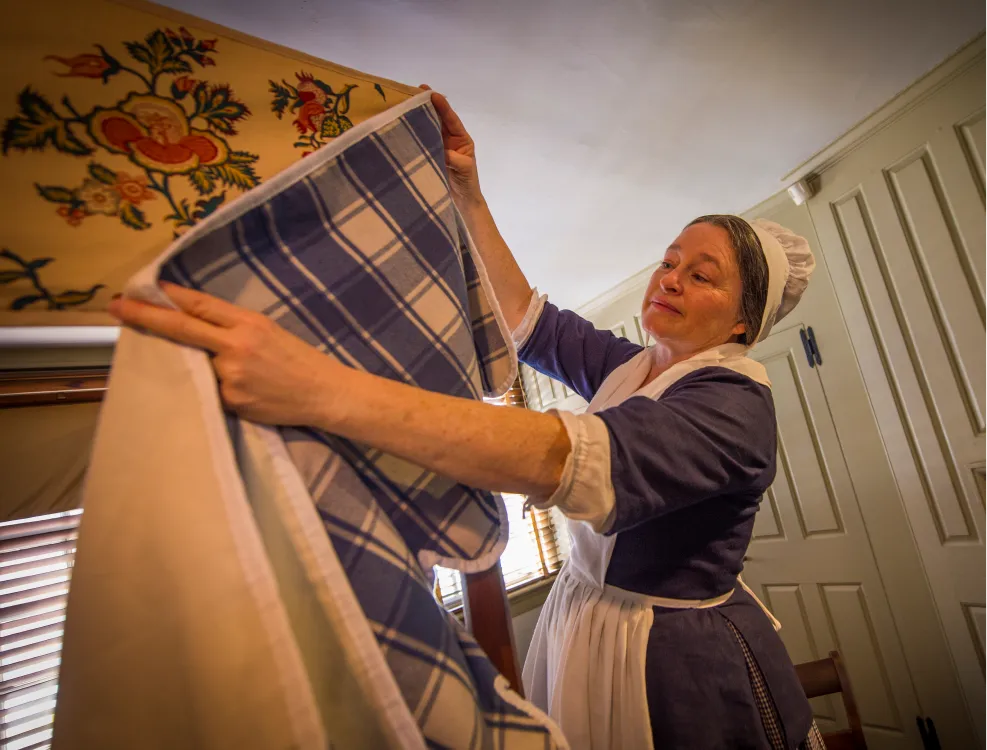
And that was how Betsy supported herself and her children as a widow and single mother. Researchers have even found documents showing that she made bed hangings for George and Martha Washington. But during Colonial times, especially during the Revolutionary War, business was hard and so Betsy, like many upholsterers, supplemented her income by sewing flags and military banners.
What you see in the upholstery room today is very much in keeping with an 18th century shop. No sewing machines. No fancy equipment. No synthetic fabrics. Just a lot of basic tools for pattern-making, measuring, cutting and sewing by hand.
Throughout the house, you will notice draperies, bed hangings and chair coverings. There is a specific reason the curtains in Betsy’s bedroom are made of a checked print. Historic Philadelphia, Inc.’s research turned up John Ross’s estate inventory sheet that was attached to his probate and included in the listing was checked print curtains. Every single item was stitched by hand in the upholstery shop by our Betsy Ross interpreters. The cornices… the pleats… the valances or slip cases… the tester… the coverlets… the pillows… the bolsters. All made on-site. Each item was carefully researched to assure the style was accurate, the fabric design was authentic and the sewing methods and construction techniques used to hand-stitch each item are the same used in the 18th century. The accuracy and attention to detail is so authentic that scholars have studied the work done by our interpreters for their own research and the National Park Service and other local historic house museums have commissioned the Betsy Ross House to sew items for several of their historic properties.
Related Stories
